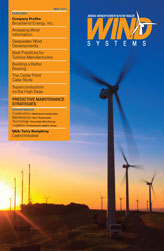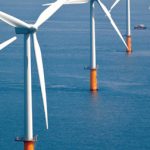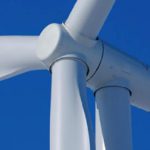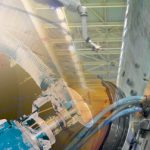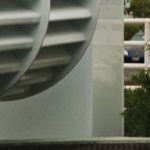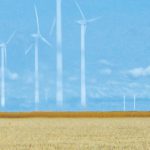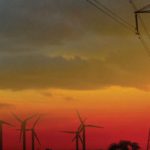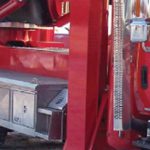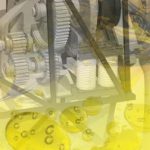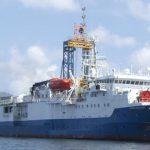While there is no shortage of wind in coastal locations around the globe, the process of effectively capturing wind for power generation isn’t always as easy as you might think. Offshore wind power generation has traditionally been reserved for shallow water locations as, to date, wind farm technology has concentrated on seabed fixed platforms. These tend to be monopile or tubular jacket platforms, which are only suitable for shallower waters and can’t be used in deepwater environments. In places such as Norway, which have comparatively little shallow water, traditional wind turbine technology can’t be utilized, despite the abundance of North Atlantic wind.
Not surprisingly, Norway isn’t alone, as other marine locations in the world face similar difficulties. However, where coastal offshore wind farms are not appropriate—in coastal marine reserves, for example—deepwater installations offer an alternative option. The deployment of the Statoil offshore wind turbine, Hywind, 10 km off South West Norway, provides a glimpse into the future of wind power generation.
With the increasing need for renewable energy sources, it was vital to enable the exploitation of offshore wind power in deepwater locations. The requirements for inshore and offshore wind turbines are quite different requiring alternative technology to enable the effective utilization of wind power in all environments. The degree of buoyancy required for the cable, for example, was a key requirement for this offshore wind turbine and something that would have been unrecognizable in shallow water projects.
However, a wide range of proven technologies originally developed for deepwater oil and gas extraction, such as deepwater riser buoyancy and protection, can be transferred to offshore wind power generation applications, such as the Hywind project. Solutions such as Trelleborg Offshore’s syntactic foam-based Distributed Buoyancy Modules (DBMs), required for the management of the power offtake cable connecting the offshore generator with Norway’s national grid, are based on technology used in the deepwater oil and gas industry.
Turbine Technology
The construction of the Hywind floating wind turbine is based on a proven deepwater floating platform design. This comprises a tall cylinder containing flotation tanks partly submerged 100 meters / 330 feet below the surface. It is ballasted at one end to ensure that it remains upright in the water, and secured to the seabed creating a comparatively small footprint. Located on top of this is the wind turbine generation unit. Figure 1
The Hywind design is suitable for deployment where the seabed is between 120 and 700 meters/ 394 and 2296 feet deep. While the heavy structure, at over 5,000 tons, is incredibly stable, it operates in a very dynamic ocean environment. The buoy itself may be virtually static, but the energy behind the movement of ocean currents at different depths can impose heavy loads on the power cable, for example even though the depth at which it is deployed from the cylinder is below the influence of the waves.
Cable Buoyancy Protection
Hywind is currently moored in 220 meters/721 feet of water with in excess of 100 meters/330 feet of power cable weighing about a ton per 10 meters/33 feet. The cable must be able to accommodate all movement and loading from the ocean in relation to the static platform, as well as its own weight, and therefore has a different performance specification than the cable used in static shallow water wind farms.
A proven method of reducing load on the cable from fixed and floating offshore structures is to provide midwater suspension of the cable by means of controlled buoyancy. In this way, the full weight of the cable doesn’t threaten the security of the connection with the structure above.
Global cable company Nexans, which has extensive experience in supplying cable and fittings for oil and gas platforms, supplied the almost 14 km of power cable reaching back to shore. Trelleborg Offshore worked closely with Nexans to develop a solution to support the 10.6 tons of cable at a depth of around 150 meters/492 feet.
The proven Trelleborg Offshore syntactic foam Distributed Buoyancy Modules provided an ideal solution to support the cable. The DBMs were carefully positioned to create what is known as a “lazy wave” formation, where a section of cable between the platform and ocean floor floats horizontally mid water to accommodate any changes in tension on the cable.
Custom-Built Buoyancy
Trelleborg Offshore designed and manufactured 45 DBMs for the Hywind project. Made from syntactic foam, the DBMs have a final buoyancy weight of 235kg/518lbs. The final buoyancy weight provides the rating for the end of design life of the DBMs and cable, it allows for some compression of the foam and the very small amount of water infiltration over the 30-year design lifetime of the solution.
The DBMs consist of two half rings with a syntactic foam core rated to a depth of 220 meter/721 feet, encapsulated within a tough protective polyethylene shell. A three-part clamp is located at the center of the ring to fix the two halves to the cable, with a restraining band around the exterior.
Syntactic foam is an essential component, as it is designed to resist the crushing pressure that would reduce normal flexible or rigid foams to a non-buoyant thickness. Trelleborg Offshore used its widely specified Evasyn™ grade of foam, which consists of a mixture of gas-filled macrospheres and microspheres held within a foam resin matrix. The formulation is precisely calculated to deliver the required buoyancy, as a mixture with a high compression resistance and low density.
The use of macrospheres and microspheres, distributed throughout the resin, impart the desired compression resistance. The glass walled microspheres, with an average diameter of 0.05-0.1mm/0.00195-0.0039 inches, are used as a buoyant filler around the thermoplastic resin macrospheres. The high-grade macrospheres, unique to Trelleborg, are injection moulded to a range of diameters to meet the buoyancy and compressive resistance requirements of the application.
Design for a Marine Lifetime
With more than 50 years of experience and development in manufacturing and formulation of a variety of syntactic foams to meet different physical requirements, Trelleborg Offshore provides bespoke solutions to match marine, offshore, aeronautical, and naval requirements. The foam core is light and dimensionally stable, but very rigid, while the use of different materials for the macro and microspheres enables a wide range of precise specifications to be met.
The polyethylene (PE) shell provides a protective and highly visible surface, which helps resists abrasion, impact damage, and marine growth. The molded shape of the shell also enables easy handling, which ensures the on-ship deployment of the cable can be done quickly and effectively. As the DBMs are fastened into position on the cable while at sea, easy handling is vital.
An essential part of the DBM is the clamp that allows each module to be fixed accurately in position on the cable for a precise distribution of buoyancy and optimum control of the cable configuration in the water. The clamp includes machined nylon segments lined with compressible rubber fingers, which produce a secure grip on the cable surface. Figure 2
The clamp segments are designed to bolt together until they contact each other, giving a simple and clear installation method. The clamping pressure is achieved by the compression of the rubber fingers, which also provide flexibility to accommodate the effects of diametric variations and bending of the power cable. All components are resistant to corrosion in seawater, ensuring structural integrity for the whole service life.
Safety is Central
For deepwater applications such as DBMs, the foam and PE shell are hydrostatically batch tested to ensure they meet the requirements for buoyancy and compression resistance, using Trelleborg Offshore’s own test facilities. The results of the tests enable verification of the materials for the task required.
As well as the buoyancy tests, geometric tests are also carried out, ensuring that all the components fit together before the DBMs are shipped out. The clamp functionality test is also done to verify that the clamp will withstand the design axial loads on the cable without slipping or damaging the cable.
The DBM is designed to ensure that it can be easily attached to the cable as it is lowered into the sea from the after deck of a cable-laying vessel. As well as having just a short “safe” weather window to perform these tasks, it is also important that the DBMs can be fastened securely under motion at low temperatures and while wearing gloves. The entire installation is carried out from onboard the ship, avoiding the cost and risk associated with the use of divers or ROVs (remotely operated vehicles).
With the ability to design, manufacture, test, and verify all aspects of offshore buoyancy and protective products for surface and subsea applications from plants in Skelmersdale and Barrow in the U.K., and Houston and Boston in the United States, Trelleborg Offshore ensures complete quality control.
Other product applications developed initially for offshore oil and gas work, but relevant to both shallow and deepwater wind turbine installations, include bend restrictors and stiffeners, protective ducting to minimize the effects of impact and abrasion, and vortex induced vibration suppression systems that reduce current induced cyclic stress on flexible cables and pipelines.
Power Generation for The Future
The world of wind turbine energy generation is entering an exciting new era with the deployment of the Hywind turbine. It provides an additional dimension in the race to create lower cost energy resources, to complement existing land and inshore technologies. Although it’s a new field, it is reassuring that a large proportion of the technology has previously been well tried and tested in other demanding offshore environments, such as the oil and gas industry.
It’s essential that all available avenues of renewable energy are explored and utilized. The Hywind project demonstrates that deep offshore wind power generation is a genuinely viable source of power generation for the future, and that tried and tested methods are available to combat the issues presented by deeper-water locations.



















